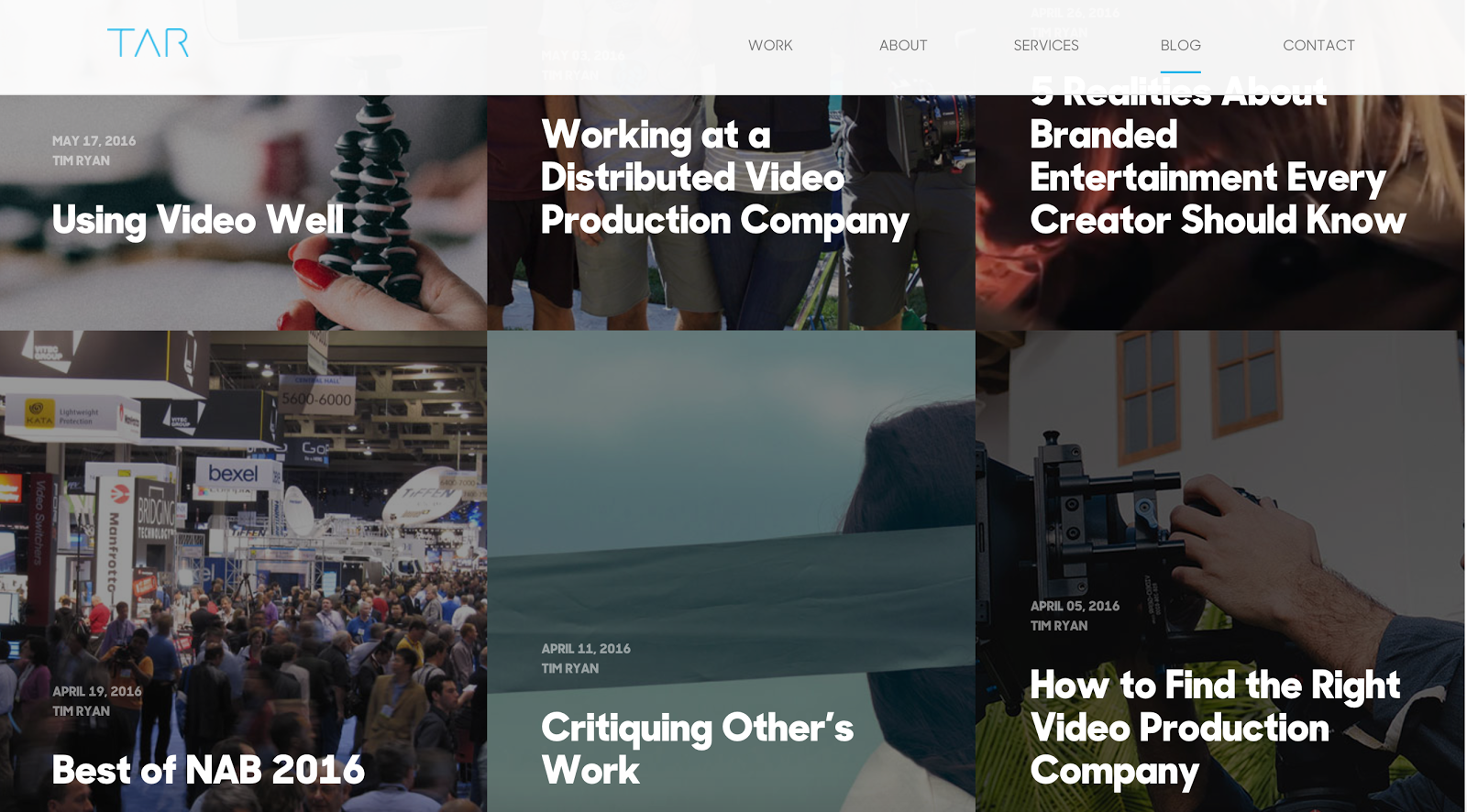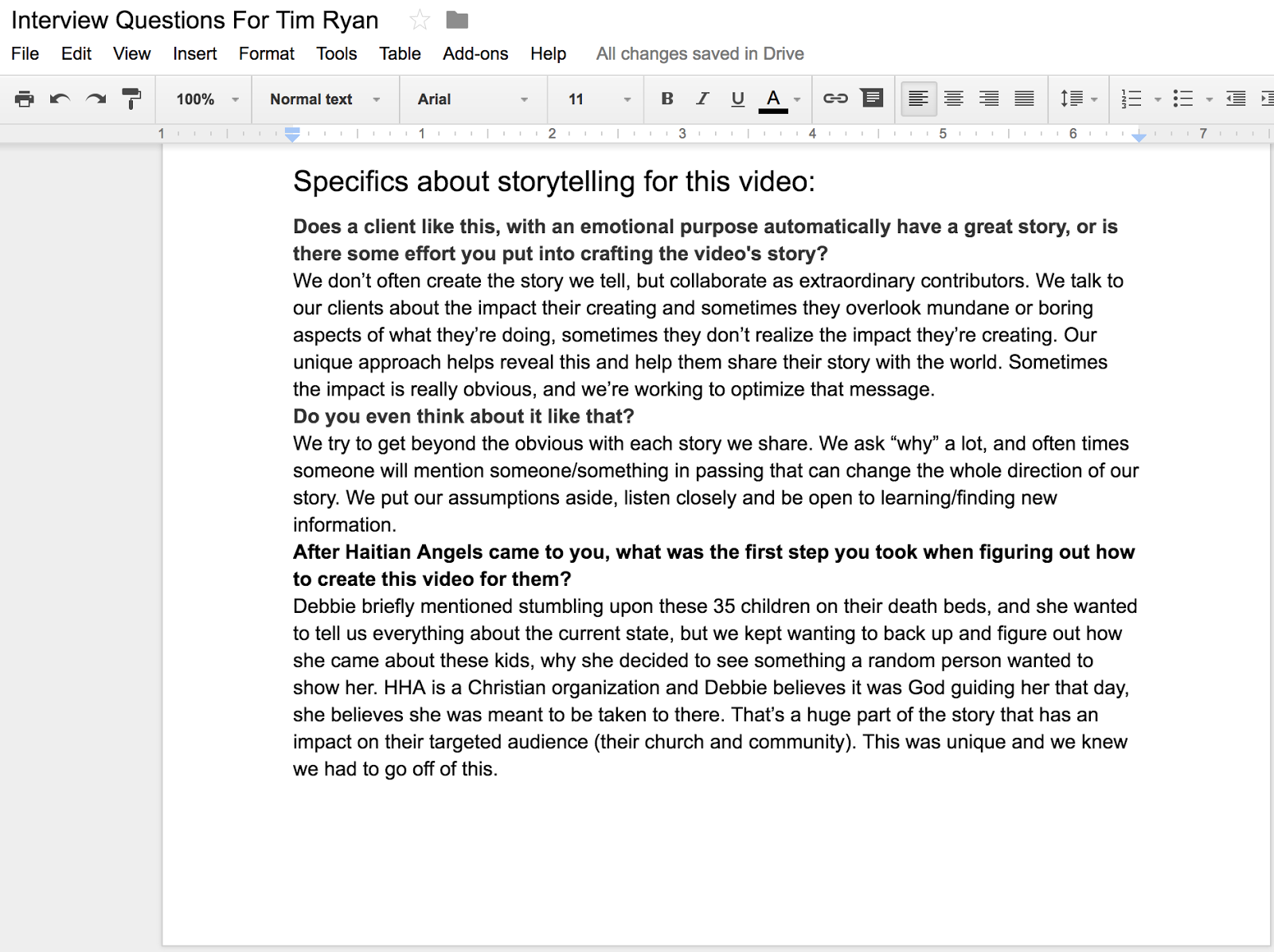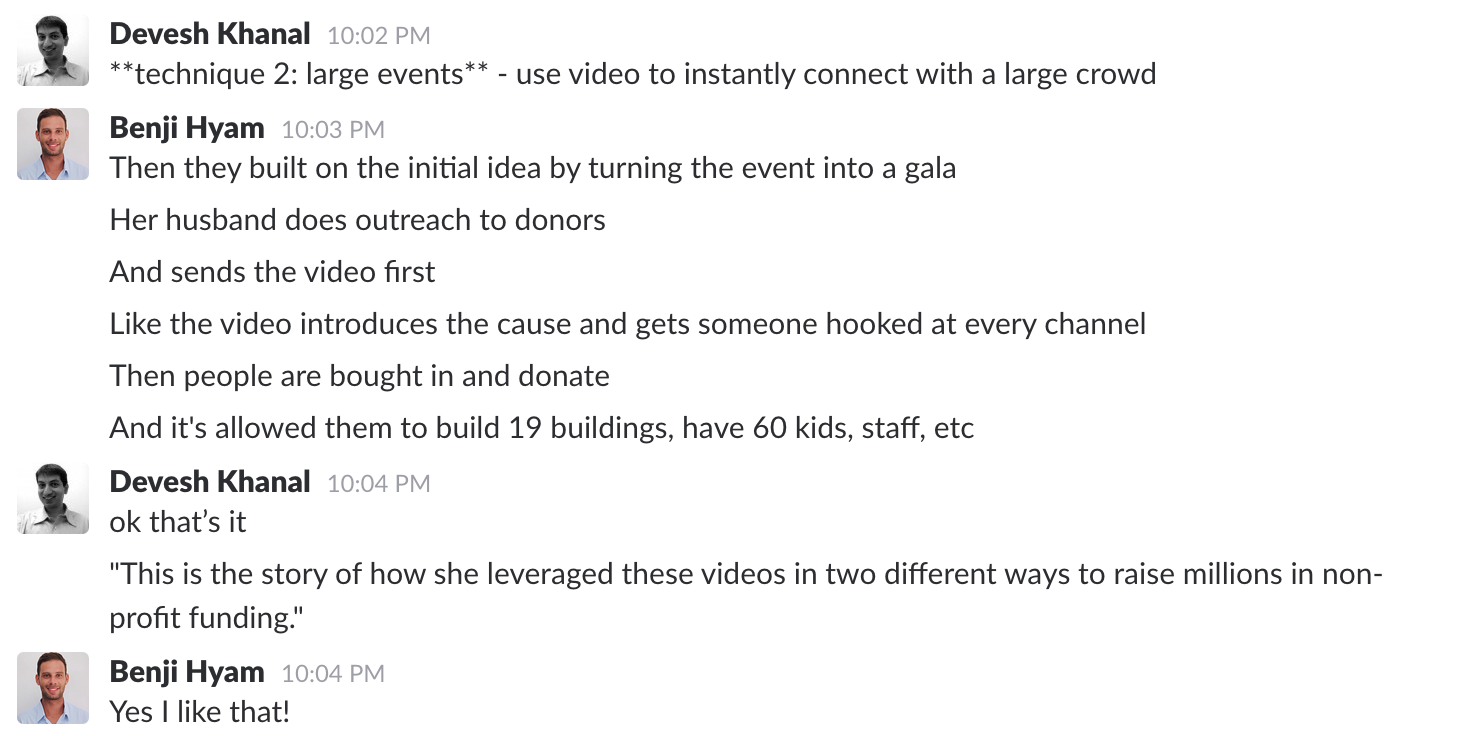This piece is Part 2 of our live challenge – The challenge is to create one blog post for a B2B company on our email list and promote it for them. The goal being to drive more traffic to this blog post in a 30-day period than they get on average to their other existing blog posts. This post is a continuation of Part 1- where we explained how we came up with the blog post idea for TAR Productions. This part explores how we created a high quality piece for them without subject matter expertise. Part 3 analyzes how the post did. If you want to follow along, you can join our email list here.
This is a common, and largely B2B-specific, problem that we’ve lived through and seen in multiple companies…
You’re a content marketer tasked with creating content for an industry or topic you have little to no experience in…
How do you create quality content for this company when you don’t have subject matter expertise to write the articles yourself?
For example:
- You just got hired as a Content Marketing Manager by a project management SaaS app. You know how to do the marketing part, but you’ve never created content for this industry.
- You’re responsible for creating content for a PPC agency whose clients pay $100,000 a year. In order to attract these people, you need to write about advanced PPC strategy – but you’ve never run a PPC campaign yourself.
- You are trying to scale content production by hiring writers to help produce content for one of the above two example businesses. You need the writers to create pieces that attract industry veterans with decades of experience in project management or PPC.
- Or in my case, 3 years ago, I was tasked with creating content for a software development company, but knew nothing about software development.
In the last example, at that software development company, I needed a way to create high quality content that would attract Founders, product managers, and engineers from Silicon Valley’s top startups.
Listicles, roundups and high-level how-to posts weren’t going to cut it if we were going to attract experienced executives that we wanted as our clients.
In this article, we’re going to share our process for creating high quality content when you have little experience about a topic.
For those that haven’t been following our live challenge, we tasked ourselves with creating a piece of content and promoting it for TAR Productions. TAR is a video production company – neither Devesh or I have an past experience in video production and we had no prior relationship with this company before choosing them for this challenge.
The need for highly specific content to attract qualified B2B traffic and leads
B2B businesses don’t have the luxury of creating content that’s main goal is to ‘get clicks’. Sites like Buzzfeed, and any large media publication for that matter, can create top 10 lists and clickbait articles because they make money off of each pageview.
Businesses need to be much more strategic in the content that they create in order to win over customers. As we discussed in part 1 of our challenge, step one of solving for the highly specific content challenge is to understand in depth who you’re writing for – what their interests, pain points and questions are.
For TAR Productions, we determined that their best customers were nonprofits and purpose-driven businesses typically family owned and operated. We determined this through a highly shortened version of our user research process (read that post for more detail).
Then we came up with a content idea that we believe will attract more nonprofits to TAR Production’s website and sell the value of their services.
The idea that we came up with was to tell the story of one of their clients, Helping Haitian Angels, and how they used one of his videos to fundraise $2M for their nonprofit.
Notice how important it is to know who the customer is before writing content.
Most people would think “TAR Productions is a video production company so they should write content about video production”.
As we talked about in our last post, that’s what TAR Productions was doing previously:

But, as we confirmed with the founder, those articles weren’t attracting his ideal customers — some of the most successful ones were doing a great job…at attracting other video producers. When you stop, do the user research, and think about your content in the light of B2B lead qualification, this can seem obvious…but that’s in hindsight. Stop and take a look at your own company’s content, there’s a good chance it’s not laser focused to attract your ideal customers.
So that’s why we decided to write an article for TAR Productions about “nonprofit fundraising” to attract those ideal customers back to his website.
We now have the challenge of creating a high quality piece of content that build trust with that audience.
How most marketers try to create industry specific content
Now again, Devesh and I know nothing about video production, and we know even less about nonprofits or the fundraising process for them, so we were very weary about creating Mirage Content – content that looks and feels like it should be good, but it doesn’t do its job of attracting qualified B2B leads.
Here’s what most people would do if they were tasked to write an article on this topic:
- They’d Google around and do basic research on nonprofits
- They’d assemble a high-level introductory piece on the topic — for example: “The ultimate guide to nonprofit fundraising”
- They’d likely include “using an video to explain your nonprofit” as an item in the must do section of the ultimate guide
- They might create a long article – let’s say 2000 words or longer – so it gives the content marketer and their bosses the impression that it’s “good content”
Now think about it for a second…
How are you supposed to write quality content that impresses veterans in the nonprofit industry using the above approach? You’re a marketer or writer that Googled around for a few hours and read 5 articles on the topic – now you’re supposed to write an article educating someone else about nonprofit fundraising? Sounds like a recipe for disaster to me…
Yet this is what most B2B content marketers do when attempting to create quality industry-specific content – and this is exactly what leads to mirage content.
How we created the piece of content for a topic we knew nothing about
Instead of creating a high-level piece about a topic, we wrote a case study / narrative about one of TAR Production’s clients to show the value of their services to other nonprofits.
To get the information necessary to write the article, we interviewed Tim Ryan, the Founder of TAR Productions.
Before interviewing him, we came up a list of questions to try to get all of the information needed. The questions were around how he approached storytelling for his client, a process nonprofits could replicate around storytelling and some background information on the client and video.

After interviewing Tim, there were a lot of key details missing from the interview with him that we needed to be able to explain for the piece to add value to nonprofits. Specifically, how Debbie Harvey, the Founder of Helping Haitian Angels (his client), used the video to fundraise. So we asked Tim if she’d be open to doing a quick interview with us.
A few days later, we ended up interviewing Debbie to learn the details about how her nonprofit got started, how they raised money in the early days, how the video was invaluable to their company, and the specifics for how they used the video.
After getting all of the information necessary between both interviews, I transcribed the conversation into a Google Doc. I did the transcription myself, however, normally I’d recommend getting someone to transcribe for sake of time using something like Fiverr.
After writing the first draft of the post, for some reason I couldn’t get the piece to where I wanted it. I ended up going off into a tangent and lost focus from the original story that I wanted to tell. Whenever this happens, I ask Devesh to help give feedback on the piece and get me back on track.
We’re not perfect when it comes to writing content. We often push each other to help get back on track.



We went back and forth until we pushed each other to an ‘aha’ moment where the specificity became clear and we had a clear story arc.

From there the story came together and it became much easier to finish the piece.
How this process creates better B2B content than the Google method
So what’s the main difference between what we did and the typical “Google around” method that most marketers at B2B companies do to produce blog content?
Instead of trying to become experts in 2 hours of Googling, the critical difference is we used the expertise of an existing veteran and let their voice, thoughts, and ideas shine through. They know the pain points better than you, they have solutions more clever than you, they even use industry specific wordings to describe issues better than you.
But the truth is: their peers, your prospective customers, want to hear from them, not you. You’re a marketer, they’re an expert.
Now, we happened to do this for the narrative format in this challenge, so for us, this process involved interviewing the non-profit founder, and Tim, the video expert, and putting both of their ideas and expertise in the article. But this process works even if you’re producing case studies, how-tos or other pieces, just the logistical details are different.
Finally, note that if you’re a B2B content marketer, experts on this topic are all around you. For example, if you work in a large company (say the PPC example from the beginning of this article), the project managers, strategists, and founders of the company have loads of information in their heads about the subtleties of PPC bidding strategy, campaigns, creative, landing pages, different industries, what works, what doesn’t, etc. A 700 word how to on a highly specific topic that they relay to you or your writers will be far more valuable to the VP of Ecommerce at an 8-figure brand that you’re trying to attract than a 2000+ word post you produced through the Google method on your own (which will likely be titled something like “7 Facebook ad bidding strategies for 2017.”). Interview the experts and turn their knowledge into high quality content.
Here’s a high-level outline of the process we follow:
- Either hire a freelance writer or write the article yourself
- Identify a subject matter expert on the topic you’re writing about – this can either be your CEO, an employee in your company or an outside resource
- Come up with a list of questions that you’d need to have answered to get enough information to write about the topic
- Interview the subject matter expert – you can use a recording tool like Piezo or otherwise
- Transcribe the interview
- Come up with a clear angle of specificity for your article
- Write the article
- Get a peer to review it and give feedback for what’s missing in making it interesting to them
- Finish the draft based on their feedback
- Hit publish
Finally, here’s the article that we ended up creating for TAR Productions:
How this Nonprofit Leveraged a 7-Minute Video to Raise over $2M
To be continued…
In Part 3 of our live challenge we’ll walk through how we researched promotion channels for TAR Productions, show how we promoted the article for them and we’ll analyze the results. If you’re curious to read the piece, go ahead. Don’t worry about clicking the link above and skewing our traffic results, we’ll subtract all traffic that came from G&C.
Want us to write an in depth case study or story like this about you or your company? We’ll also drive traffic to it. Apply here.
Like this article? We produce stories like these for our clients, learn more here.
Get Our Interview Questions
Enter your email below to get a link to our interview document (Google Doc).
If you're not yet on our list, by opting in below, you'll join our list. We send in depth content marketing articles (like this one) as well as exclusive email-only ideas about once a week. It's free and you can unsubscribe at any time.








